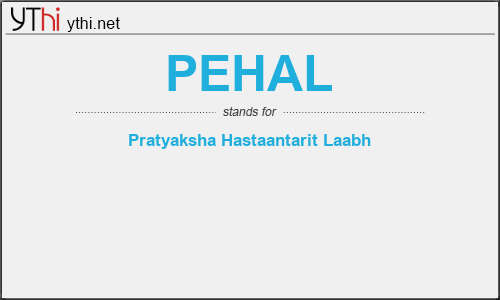What does PEHAL mean? What is the full form of PEHAL?
The Full Form of PEHAL is Pratyaksha Hastaantarit Laabh.
The Government of India provides Liquefied Petroleum Gas (LPG) to domestic households at heavily subsidized rates in 14.2 Kg cylinders up to the prevailing cap of cylinders per annum per household. Supplies are made by the consumer through a wide distributor network of Oil Marketing Companies (OMCs). LPG cylinders from 186 bottling plants are sent to more than 13000 distributors to serve more than 16 crore households, covering more than half of the country’s population, delivering more than 30 lakh cylinders every day. All the social groups are impacted by the delivery of LPG cylinders as it is an essential commodity for almost 50% of the households (a larger percentage in the urban areas). LPG is a clean fuel and over 16 crore households use it for cooking purposes at highly subsidized rates. The total subsidy burden is Rs. 46,000/- car for 2013-14.
The fact that such a huge amount of subsidy is being provided to consumers imposing an unimaginable burden on the state exchequer, is a matter of grave concern. As this fact has not been effectively communicated to the consumers, there has been a growing sense of entitlement on the part of the consumer to the subsidy. Apart from the lack of awareness of the huge subsidy burden, the price of domestic subsidized LPG below the market price has also led to diversion of subsidized LPG to commercial purposes, which unnecessarily adds to the subsidy burden on the exchequer. LPG is an essential commodity, its supply and distribution has been regulated by various regulations to control the trade and illegal diversion. However, the prevention of such activities has at best been minimal, primarily due to the large scale of the LPG supply chain.
The only way to prevent this diversion is to move LPG in the supply chain at one market price so that the incentive for diversion is eliminated. This is the backdrop of the Direct Benefits Transfer for LPG (DBTL) Consumers scheme.
PaHaL, which covers more than. 9.75 crore LPG consumers, is perhaps the world’s largest cash transfer program as compared to similar programs in other countries, such as China, Mexico and Brazil. Under PaHaL, LPG cylinders are sold at market rates and entitled consumers get the subsidy directly into their bank accounts.
The LPG supply chain was opaque and LPG consumers were powerless, and were at the mercy of the distributors in a monopoly market structure. The government at one hand wanted overcome these obstacles and delivery good services to citizens and on the other hand wanted to reduce their subsidy burden by curbing the diversion of subsidized cylinders meant for domestic consumers into the commercial market. Hence, a task force was set up to suggest a solution to this problem. One of the recommendations was to infuse transparency and efficiency into the supply chain of LPG. The Task force suggested a framework which would lead to better management of subsidy and reduction in the burden to the exchequer. Information technology has become an enabler to achieve these objectives. The Government decided to launch PAHAL or Direct Benefits Transfer for LPG (DBTL) scheme for LPG consumers across the country.
PEHAL
means
Pratyaksha Hastaantarit Laabh![]()
Translate Pratyaksha Hastaantarit Laabh to other language.


Leave a Reply
You must be logged in to post a comment.